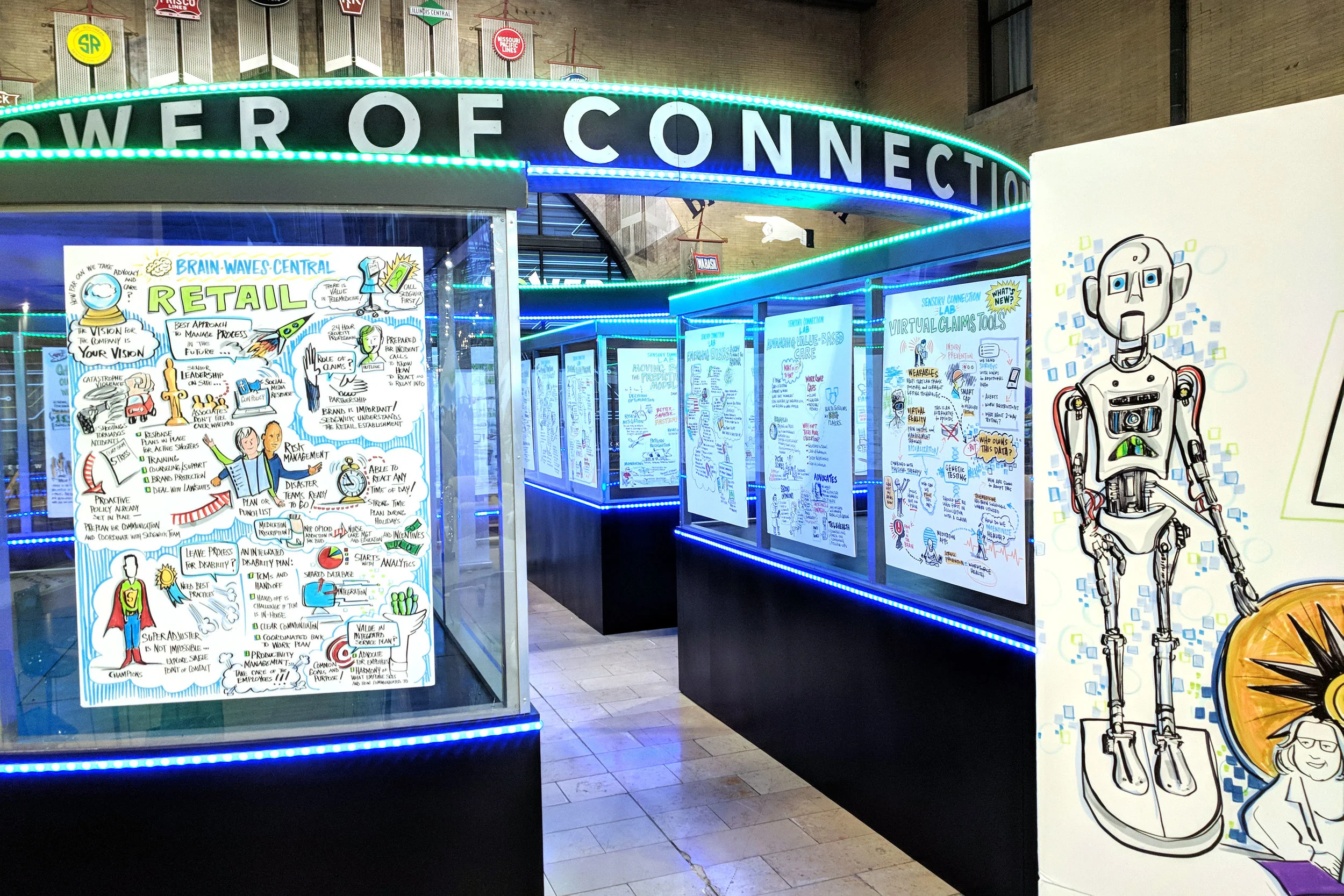In workshops and seminars, improv consultants pull stodgy executives to their feet, creating novel situations to which they must react, encouraging them to move their bodies, jump, say wild things, clap or sing or dance, play with toys, sit on desks, crawl on the floor and generally provide crazy-seeming new points of view. Tension melts away. Competition takes a back seat. And new ideas miraculously start to flow.That’s not to say that every business brainstorming session should turn into a stand-up comedy skit. But the openness and playfulness that characterize improvisational acting can create a sense of cooperation and affirmation that is foreign to highly competitive workplaces. When one worker actively shoots down another’s ideas to help his or her own ideas win, nascent notions that could develop into something brilliant die on the vine.
Instead, Ms. Madson and other improv consultants, including a team out of Portland, Ore., called On Your Feet, are hoping to create what Ms. Madson calls “a culture of ‘yes.’ ”
“Saying yes sounds implicit, but it’s profound,” she says. Barriers go up in front of fresh ideas within moments of their creation, leading to an atmosphere of “we can’t do that,” she says. “The improv idea of saying yes from the start,” she adds, “allows business folks to entertain things that would ordinarily get axed out.”
Ms. Madson has been a senior lecturer in drama at Stanford since 1977; her interest in using improvisation to improve business and education evolved slowly. Brilliant as they were, Stanford students were very good at giving what they perceived as the correct answer to a question, but became much shakier when asked to come up with original answers.
Too often, the student mind — not to mention the business mind — is looking for a formula to latch onto that will provide tried-and-true ways of solving problems. But that can block fresh ways of viewing a situation.
Ms. Madson found that teaching students to respond quickly to what’s already in front of them helped to shake new ideas loose. “Certainly it’s useful for actors,” she notes. “But executives and engineers and people in transition are looking for support in saying yes to their own voice. Often, the systems we put in place to keep us secure are keeping us from our more creative selves.”
Improvisational thinking can open the door to what others call “happy accidents.” There are many examples. The molecule that eventually became Viagra originally was developed to treat hypertension, and later angina. When it failed to do much for either of those conditions, Pfizer nearly killed it. But researchers intrigued by the molecule’s side effects ultimately won permission to continue developing the drug as a treatment for erectile dysfunction.
Even On Your Feet is a result of a spontaneous “happy mistake,” its founders note. “On a wet November Saturday in 1996,” they say on its Web site at www.oyf.com, “two unsuspecting bald guys with glasses met at a bakery in Portland, Oregon, to talk about a T-shirt and instead, by complete accident, formed a consultancy that uses improvisation and other experiential techniques to help organizations create, relate and communicate, all while having a ridiculously good time.”
The firm now employs the talents of “an ex ad planner, an anthropologist, two yoga teachers, a handful of improvisers, marketing executives, a snow cone baron and a former mail carrier/biochemist.” They live in places as varied as Portland, London, Dublin and El Hornillo, Spain.
Robert Poynton, a co-founder, says in an upcoming book that everything from building a house to double-entry bookkeeping requires a generous dollop of spontaneous action to be successful. “For all its accomplishments, indeed, perhaps because of them, the modern world is far from stable,” Mr. Poynton says in an online excerpt from the book, titled “A Turtle and a Guitar Case: Improvisation and the Joys of Uncertainty.” “If anything,” he says, “we know rather less about what is coming next, and how it will affect us, than our ancestors did.”
And so the more spontaneously we respond — the more improvisational we are — the more likely we are to stumble across new and improved methods for resolving problems.
The On Your Feet site tells the story of what it calls a “cool mistake”: “Josephine Dickson married a man who worked for a company that manufactured gauze and adhesive tape. Josephine Dickson was accident-prone. During the first week that she was married to Earle Dickson, she cut herself twice with the kitchen knife. After that, it just went from bad to worse. It seemed that Josephine was always cutting herself. One day her husband had an idea. He sat down with some tape and gauze and a pair of scissors. Then he cut the tape into strips. In the middle of each strip he stuck a little square of gauze. Hence the birth of Band-Aids.”
Even the best-planned businesses can fail, Ms. Madson notes. Improvisers avoid spinning their wheels because they see quickly what isn’t working or, simultaneously, what might be successful that didn’t occur to them at first. Improvisers, by definition, take risks and make mistakes, lots of them, but that’s what leads them in fresh directions.
She acknowledges that it can be hard to wrap the business mind around improv, because improvisers don’t dwell on the future. “The future takes care of itself if we’re building constructively right now,” she says. “You’re throwing out planning as the primary mode of work, but it doesn’t mean you don’t then use known strategies and systems to move forward.”
Mike Kwatinetz, a venture capitalist who is co-founder and general partner at Azure Capital Partners in Palo Alto, Calif., says he believes that improvisational thinking gets new companies rolling in the right direction. “For these young companies, and hopefully forever, you want to have changes all the time,” Mr. Kwatinetz said. “You want to be reacting to what you’re seeing and what you’re doing right and where it’s not working and react to that to try something different.”
Besides, he says, “if you’re working at a job as intensely as we do, you’d better be enjoying yourself.”
Janet Rae-Dupree writes about science and emerging technology in Silicon Valley.



















































